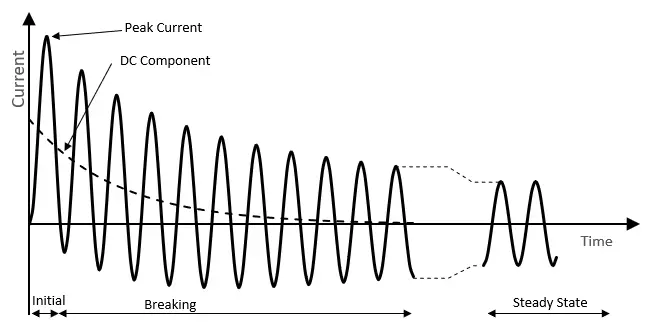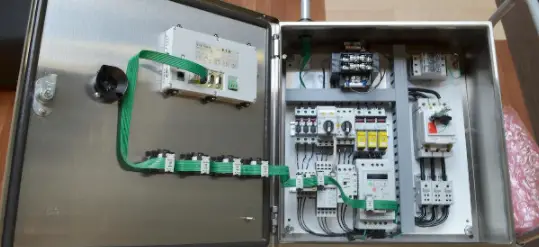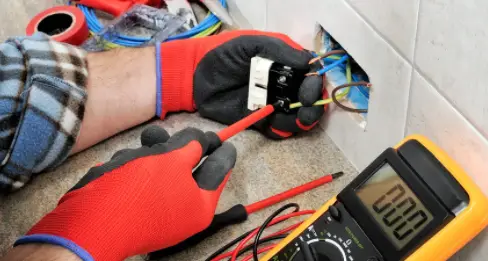In this short guide, we’ll talk about what a short circuit current is and its causes. We’ll also go over ways to measure short circuit current and prevent it, as it can be dangerous in certain situations.
Let’s jump into it!
What is a short circuit current?
A short circuit occurs when a low-resistance path that isn’t suited to carry electricity receives a high amount of electrical current. This increased amount of electrical current is referred to as the short circuit current.
This is harmful for two reasons: The flow of a larger current can overheat equipment, and the flow of short circuit current in the parts carrying the current produces a force of electrodynamics interaction that may damage or destroy the equipment.
The short circuit current can depend on several factors:
- Area of solar cell
- Number of photons
- The spectrum of the incident light
- Optical properties
- Collection probability
As we know by Ohm’s Law, Voltage equals current multiplied by the resistance. If the resistance becomes zero:
I = V/0
Current will approach infinity, as a number cannot be divided by zero, but that is theoretical. Practically, what happens is that there’s still some amount of resistance in the wire between the source of the voltage and the point of fault.
We can say that a very high amount of current flows through the circuit—depending on the voltage level at which the short circuit occurred. The high amount of current can cause damage and self-destruction within the circuit.
Common FAQ
How do you measure a short circuit current?
Because we’re dealing with numbers divided by zero (or relatively tiny numbers), the short circuit current is mainly described as a theoretical value that can be calculated from the grid respectively voltage source impedance, assuming current-independent impedance.
The short circuit current can be extrapolated from voltage drops measured at nominal load current—for AC voltage sources, a complex impedance should be used. According to Ohm’s Law, you can figure out the current by dividing the voltage of the unloaded power source by its internal resistance.
Tips to be safe when a short circuit current occurs
Short circuit currents can occur inside homes and other buildings. When this happens, there are steps you can take to be safe:
- Turn off all light and appliance switches that run along the circuit
- Inspect all the power cords plugged into the outlets along the circuit that has tripped
- Turn on each light and appliance switch, one at a time
- Repair the circuit wiring problem as soon as possible
- Replace fuses
- Reset your circuit breaker
How do you prevent a short circuit current?
There are many steps that an individual can take to prevent a short circuit current from happening. These steps won’t guarantee that a short circuit current won’t occur, but these steps can ensure that short circuit currents won’t happen often. Here are the steps:
- Check outlets before use – Be careful when using an outlet with burn marks, a burning smell, buzzing or popping sounds coming from the outlet, sparks emitting from the outlet, or if the outlet is over 15-25 years old.
- Check appliance before use – Dispose of or repair your appliances if there are damaged cords, casing, or wiring, several cracks in the apparatus, or if the appliance has exposed circuitry.
- Reduce electrical usage during storms – The most dangerous way the short circuit current occurs is through a lightning strike. Only using the necessities for electrical usage can prevent short circuits from happening, and it can also lessen the damage if a power surge occurs.
- Perform essential circuit breaker maintenance – Check each circuit breaker for damages, cracks, or loose fittings, know what circuit each break controls using a circuit breaker finder, and clean any dirt stains or spots located on the breaker and panel using only a dry cloth.
- Schedule an electrical inspection at least once a year – An electrical inspector can help maintain your wiring, outlets, and every other part of your electrical system. Electrical inspections are just as necessary as a doctor’s appointment!
Does a short circuit increase current?
Yes, a short circuit increases current. Because a short circuit is an electrical circuit that allows current to travel down an unintended path with little-to-no electrical impedance, voltage exists in an area of low resistance.
In Ohm’s Law, if you divide a number by an extremely small (basically zero) number, the resulting dividend is a large number—the current, in this case. A common type of short circuit is when the positive and negative terminals of a battery are connected with a low-resistance conductor, like a wire.
Hence, during a short circuit, the current inside of a circuit increases heavily.
Wrapping up
Hopefully, this short article taught you about the dangers of short circuit current and some simple tips on preventing a short circuit current. This phenomenon doesn’t occur often, but it’s best to be prepared for the worst rather than having damaged appliances, equipment, or injuries when it does.



